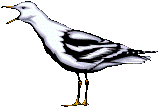Eastern Wildlife Damage Control Conferences
Date of this Version
9-22-1985
Document Type
Article
Abstract
In response to a need for a safe and effective method of reducing rodent damage to newly planted corn in conservation-tillage fields, too chemicals, thiram (tetramethylthiuram disulfide) and methiocarb (3, 5-dimethyl 1-4-methylthio] phenol methylcarbamate), were coated on untreated seed corn for evaluation as repellents and agents for conditioned aversion, Results of field-enclosure and other studies indicate that 1.25% thiram by weight repels thirteen-lined ground squirrels and causes no phytotoxicity. Lower thiram rates tested (0.08, 0.4, 0.8%) were ineffective, Methiocarb rates of 2.5 and 5.0% repelled thirteen-lined ground squirrels, but these rates may significantly reduce corn stand counts under some conditions, Methiocarb at 0.5% appears ineffective. Although this rate was highly repellent on dry un-planted seeds, it lacked repellency with planted corn, possibly because of the way that ground squirrels attack water-soaked, germinated seeds. Preliminary laboratory trials, evaluating the response of deer mice (Peromyscus maniculatus) to repellent-treated corn seed, indicate that thiram (0.31, 1.25%), methiocarb (0.031, 0.5%), and a combination of the two, all repel deer mice, but that repellency does not persist when treated seeds are replaced with untreated. The negative-experience cue apparently was the treatment itself; no lasting aversion to untreated corn was produced, However, continued repellency was achieved using a methiocarb (0.125%)+odor treatment. With further development, repellents say provide an effective and safe solution for rodent damage to newly planted corn, an emerging problem for conservation-tillage agriculture.

